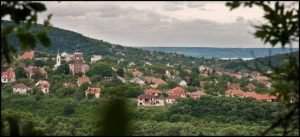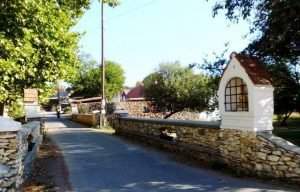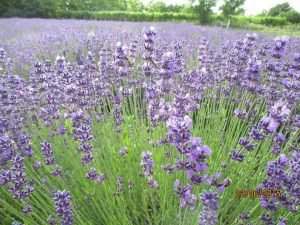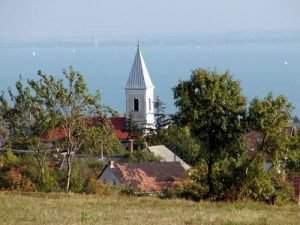6 must-see places in the Balaton Uplands area

Travelo.hu thinks that Lake Balaton is still in fashion nowadays, especially the Balaton Uplands area. It could be because it’s going through a touristic revolution, like the one Budapest has been going through, which brings by the uprise of standards and a new attitude regarding hospitality.
The key word is sustainability, not only from an energy-economic aspect but also from the aspect of having guests return. Sustaining interest and income is only possible with a constant guest-centralised attitude and development – luckily more and more people understand this. The Balaton Uplands is a firm point, good choices are almost guaranteed there. Listed below there are six must-see places that travelo.hu collected.
The sights of these villages only require as much mental capacity as much is left when being on vacation and lying on the beach. In some places you only need a big walk to feel the atmosphere of past centuries.
[button link=”https://dailynewshungary.com/tag/balaton/” type=”big” newwindow=”yes”] Read more news about LAKE BALATON[/button]
Dörgicse
It’s a three-in-one village as the settlement, populated by 258 people, was united from three individual villages: Alsódörgicse, Felsődörgicse and Kisfaluddörgicse, which are still separated from each other. The three villages create a unique atmosphere among the hills, with their old, stone, single-floor, gardenless houses, neat public places, and some newer buildings that blend into the landscape. Moreover, you can find two completely different church ruins, a medieval bridge and finally, you can enjoy the Dörgicse-style chicken soup.

Felsőörs
A quite hard hump leads from Lake Balaton through vineyards and fruit gardens to one of the most significant monuments from the historic Árpád era. The construction of the Roman provostry church mainly passed off in the 13th century, and what makes it special is that it kept its form throughout the time. Practically there were only small changes and it’s a miracle that it was left out of the baroque waves in the 17th-18th centuries.

Kapolcs
“The Valley of Arts” (it’s going to be held between the 22nd and 31st of July this year) – that’s given to you if you are asking an experienced Balaton traveller about Kapolcs. However, the village also lives and functions on the other 51 weeks of the year; the festival is not the only chance to visit it. The village has rows of water mills at the shore of the Eger stream and some of them still function and can be visited. One of these is the Falumalom (village mill) in the centre of the village, where they show visitors how different grains are processed on more than hundred years old machines. You can also see the statue quarter, the renovated village bridge and the village’s museum-smithery. It’s also worth going for a walk under the trees, peeking into the neat homes, or even, going for an excursion in the neighbouring forests.

Kékkút
This is probably the most widely known village, with less than a hundred dwellers, as its mineral water is famous all around the country. The village, which lies in the heart of the Káli Basin and has lovely narrow streets and small houses, has already been dwelled in the time of the Romans, Avars and the settlement of the Magyars in Hungary. The pride of the village is the oldest folk house of the Káli Basin, from 1799, which can be visited as a monument. That is where you can also find the Lavender Porta, which is a huge property at the edge of Kékkút with wandering cows, sagging belly pigs, sheep, stables and lavender land. You kind of feel like you’re on the set of a Provence movie, but it is an actual farm where the owners, Eníd and Tibor make homemade lavender syrup, lavender jelly and cheese. After you have admired the lavender field, you can visit the bottler factory or the beautiful Kornyi Lake.

Óbudavár
Óbudavár, consisting of one lonely hillside street, lying in the Nivegy Valley, might be the smallest village in the Balaton Uplands. It has 54 dwellers and is ensphered with vineyards from the west and a relaxing park from the east, which can be enjoyed by the dwellers after a bustling day. There is a parking lot and a board at the entrance of the Saint Martin relaxing park signalling that you’re in the right spot. The Mosóház stream (washing-house stream), which was once actually used for washing, is circled by boards signalling different tree types. This is where the Hungarian national Schönstatt Chapel can be found, which is the centre of a Catholic spirituality movement.
Paloznak
The village near Csopak, which doesn’t have a train station or a beach, was originally characterised by viniculture and fishery. The village, built onto hills, has intergrown with Lovas, known for its ancient red paint mine, and Csopak, known for its water mills. Paloznak’s primordiality, and that it was able to preserve this, are what’s so special about it, since, even a charter from 970 mentioned that its name means “under vineyards”. It was even awarded in 1998 with a Hild János Prize for village arrangement, for being able to keep traditions and developments in harmony. This guarantees the Mediterranean feeling you get when walking in the village.

Photos: www.facebook.com/Dörgicse, www.facebook.com/FelsőörsiFalunapok, www.facebook.com/KapolcsVölgyportál, www.facebook.com/LevendulaPorta, www.obudavar.hu, www.balatonfuredma.hu, www.termalfurdo.hu
Copy editor: bm
Source: http://travelo.hu/






I love Hungary, I am married to my second Hungarian wife and have a daughter. I come and visit usually at least once a year the whole country is beautiful and quiet.
However we have been angered on two occasions and at a loss why the authorities do not take action against those hotelliers/bed and breakfast’s who take bookings with deposits and then if there is a dearth of accommodation ie especialy Balaton area in August will accept a higher offer from foriegn tourists for your pre booked accommodation. They then either get hold of you when your on tour-in transit to your destination or you turn up to find someone else in your rooms.
My experience is that if you make a complaint at the local tourist board they just shrug their shoulders as part of their hospitality.